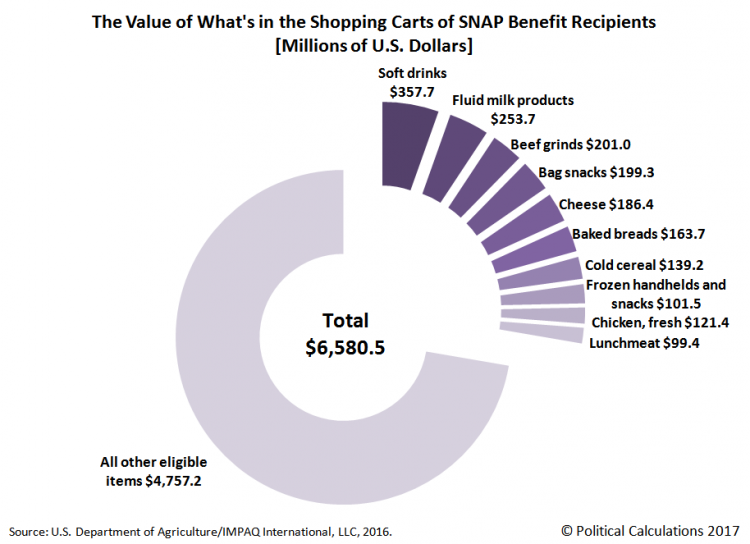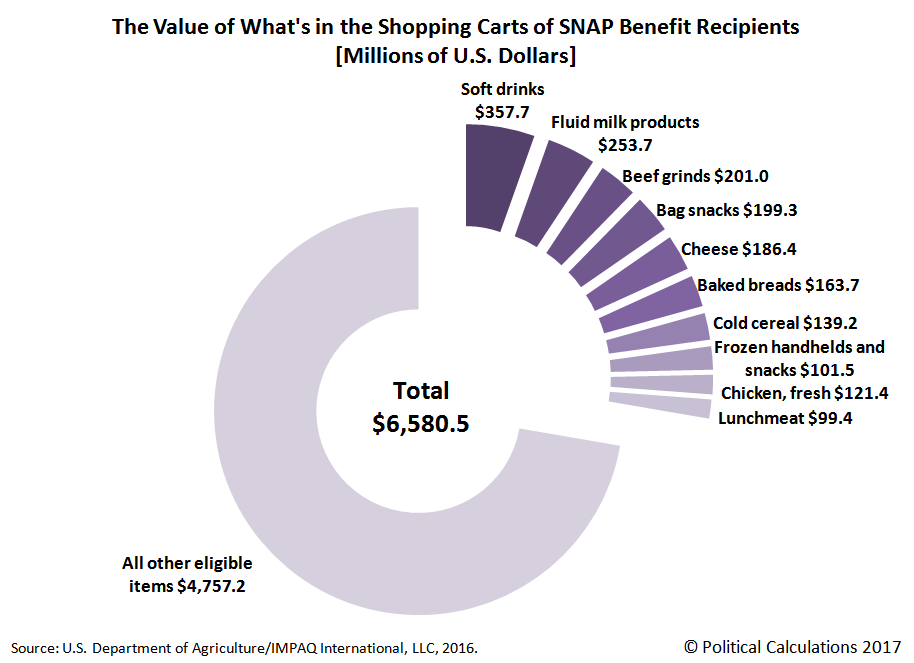
Last November, the USDA published a report that provides some insight into the kinds of food and drink items that recipients of its Supplemental Nutrition Assistance Program (SNAP), which used to be called “Food Stamps”, are buying up with their government-issued EBT cards.
In the chart below, we’ve taken the Top 10 items from Exhibit 6 of the report, which lists the millions of dollars of eligible food and drink commodities that SNAP recipients were determined to have bought in transactions using their EBT cards, and shown how the spending for those items compares to the total amount of spending that was counted in the study.

Together, SNAP benefit recipients purchases of the Top 10 food and drink categories accounted for over one-quarter of all the spending on eligible food and drink items captured in the report. The most popular category, soft drinks, alone accounted for over 5.4% of all purchases, or about $1 of every $18.38 spent.
It’s important to recognize that SNAP recipients will often use a combination of their regular income and their SNAP benefits to purchase groceries. For example, a single individual in New York City who has $825 in income per month can augment that income with a monthly SNAP benefit of $194 per month (a lower amount of SNAP benefits can be obtained for such single, childless, working-age individuals with incomes of as much as $1,285 per month).
Since these benefits are exempt from federal, state and local income taxes, and are also exempt from state and local sales taxes, SNAP recipients can maximize their benefits by using them to buy items that would otherwise be subject to state and local sales taxes. For example, in New York once again, items like carbonated soft drinks, candy and grocer-prepared food like sandwiches, are subject to the state’s sales tax rate of 4%, where the city of New York would pile on an additional state’s sales tax rate of 4%, which makes it possible for SNAP benefit recipients to buy 8.49% more of these kinds of groceries in New York City with their benefits than they can with their regular income.
















